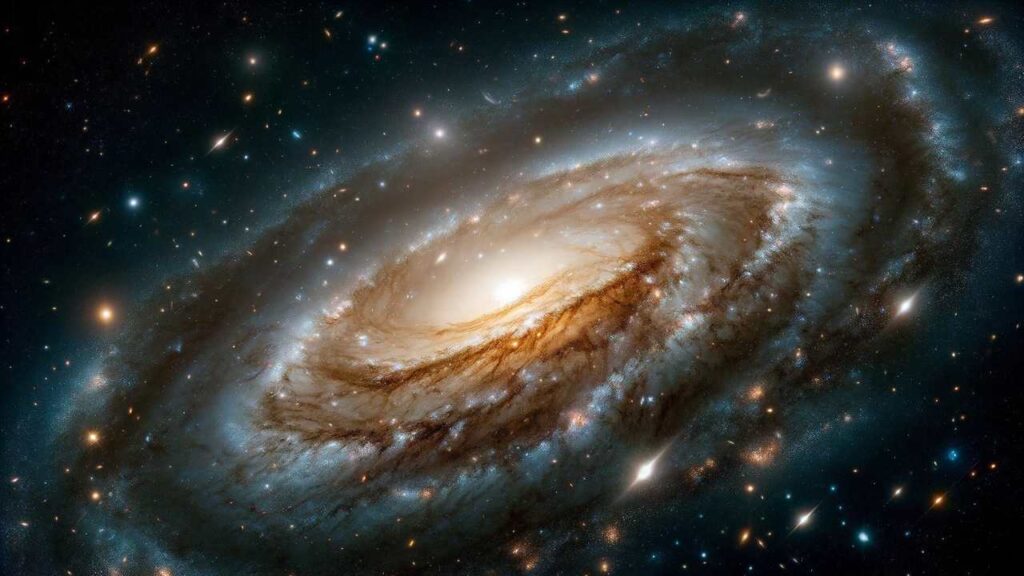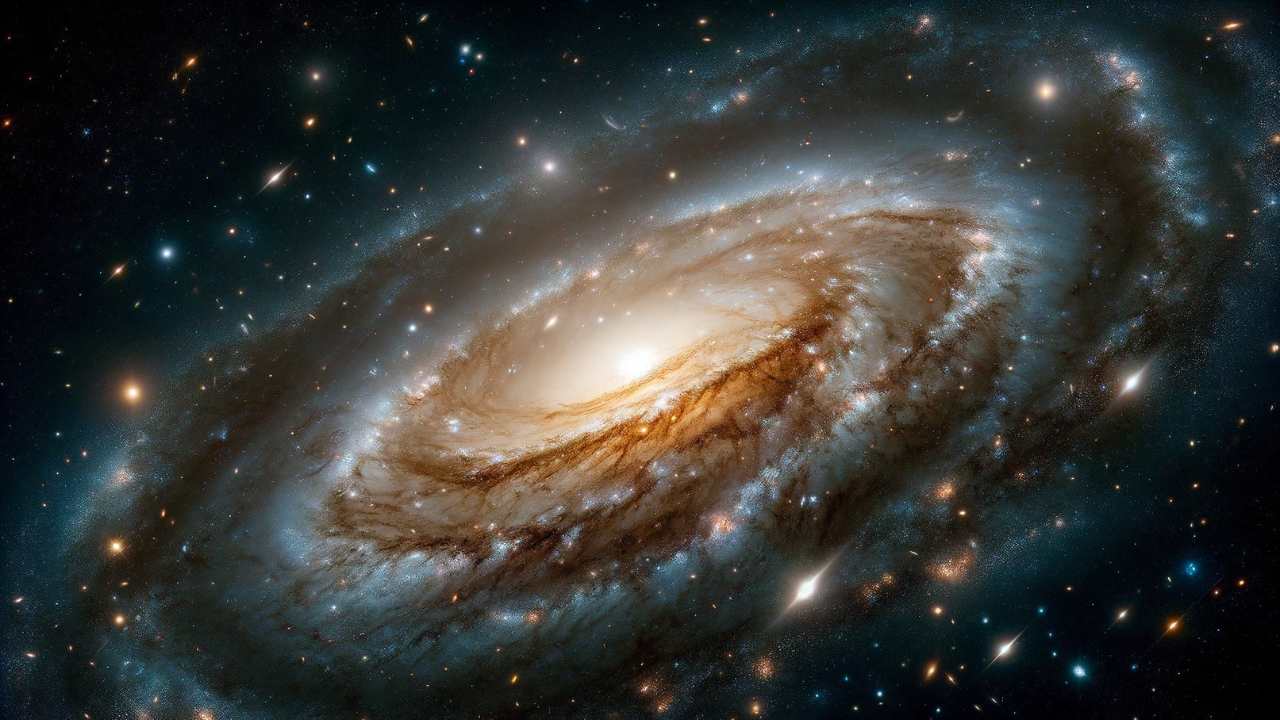Discover NASA’s groundbreaking capture of the Virgo Galaxy, a celestial marvel 52 million light-years away, through the lens of the Hubble Space Telescope. Explore the significance of this astronomical discovery in understanding the universe’s structure, the role of dark matter, and the future of space exploration. Join us in unraveling the mysteries of the cosmos with this stunning visual feat and its impact on astrophysics and cosmology.
NASA has once again pushed the boundaries of space exploration and astrophysics by capturing an exquisite image of the Virgo Galaxy, located an astounding 52 million light-years from Earth. This significant achievement not only highlights the progress in space technology but also provides a deeper understanding of the universe’s intricate structure and history.

Exploring the Depths of Space: The Journey to the Virgo Galaxy
Situated in the Virgo constellation, the galaxy is part of the expansive Virgo Cluster, one of the nearest galaxy clusters to the Milky Way. The image unveiled by NASA showcases the galaxy’s luminous core, its spiral arms, and the ethereal glow of its star-filled halo, offering a mesmerizing view of its grandeur.
The Pinnacle of Observation: NASA’s Technological Advancements
To obtain this breathtaking image, NASA employed sophisticated observational instruments, including the renowned Hubble Space Telescope. These devices are designed to capture light across a broad spectrum, from ultraviolet to near-infrared, enabling astronomers to study celestial objects in extraordinary detail.
Time Travel Through Light: The Galaxy’s Story
Observing the Virgo Galaxy allows us to peer into the past due to the immense distance its light travels to reach Earth. The photons that we now observe embarked on their journey 52 million years ago, thus providing a historical record of the universe’s conditions at that time. This time-lapsed observation is crucial for comprehending the evolutionary trajectory of galaxies and the universe’s expansive narrative.
Enhancing Cosmic Understanding: The Scientific Advancements
Investigating the Virgo Galaxy enriches our comprehension of how galaxies form and evolve over eons. Through such detailed study, astronomers can draw parallels with other distant galaxies, refining our knowledge of the universe’s grand architecture. This exploration is key to solving cosmic puzzles related to dark matter, dark energy, and the fundamental forces that sculpt the universe.
Looking to the Future: The Next Frontier in Space Exploration
The successful imaging of the Virgo Galaxy marks a milestone in astronomical research, setting the stage for future explorations. Upcoming telescopes like the James Webb Space Telescope promise even more detailed cosmic surveys, potentially unveiling new secrets of galaxy formation and interaction.
Wrapping Up
The awe-inspiring image of the Virgo Galaxy captured by NASA not only broadens our cosmic perspective but also ignites the imagination, showcasing the beauty and complexity of the universe. With each celestial discovery, humanity edges closer to unraveling the mysteries of the cosmos, continuing our quest for knowledge and exploration in the vast ocean of space.
NASA’s latest endeavor in capturing the essence of the Virgo Galaxy reinforces our quest for cosmic knowledge and exemplifies the spirit of discovery that propels humanity forward in its interstellar journey. As we gaze at the wonders of the universe, the Virgo Galaxy stands as a symbol of our ongoing exploration and the endless possibilities that the cosmos holds.
NASA has once again pushed the boundaries of space exploration and astrophysics by capturing an exquisite image of the Virgo Galaxy, located an astounding 52 million light-years from Earth. This significant achievement not only highlights the progress in space technology but also provides a deeper understanding of the universe’s intricate structure and history.
NASA’s recent capture of the Virgo Galaxy is more than just a photographic achievement; it represents a significant stride in our quest to decipher the universe’s secrets. This event has sparked excitement across the global scientific community, encouraging a multidisciplinary approach to cosmic exploration. Researchers in fields ranging from astrophysics to theoretical cosmology are finding new avenues to explore, prompted by the data derived from this distant galaxy.
Interdisciplinary Insights: Beyond Astronomy
The detailed imagery of the Virgo Galaxy has implications that extend beyond traditional astronomy. For instance, the field of astrobiology examines such discoveries to understand the conditions under which life might arise in different parts of the universe. The composition and characteristics of distant galaxies like Virgo can offer clues about the chemical elements available for life’s potential genesis elsewhere in the cosmos.
Furthermore, the study of the Virgo Galaxy intersects with particle physics, particularly in the hunt for dark matter. The galaxy’s gravitational effects on its surroundings provide indirect evidence of dark matter’s presence, fueling theories about this mysterious component of the universe. Analyzing the light from the Virgo Galaxy, especially its interaction with dark matter, helps physicists refine their models of the universe’s fundamental structure.
Cultural Impact: Inspiring Humanity
The stunning visuals of the Virgo Galaxy have a profound impact beyond the scientific community, reaching into the realm of culture and education. They serve as a powerful tool for public engagement, sparking curiosity and wonder about the universe. This celestial imagery inspires artists, writers, and filmmakers, influencing popular media and art, and fostering a cultural appreciation of space exploration.
In educational contexts, such discoveries are invaluable for teaching complex scientific concepts in an engaging manner. Students of all ages can appreciate the scale and beauty of the universe, fostering a sense of global stewardship and a desire to learn more about our place in the cosmos.
Technological Triumphs and Future Endeavors
The imaging of the Virgo Galaxy underscores the technological advancements in space exploration. It highlights the synergy between engineering and science, as new tools and methodologies are developed to capture and analyze cosmic phenomena. The success of this mission paves the way for future endeavors, with space agencies planning more sophisticated missions to further unravel the mysteries of the universe.
Looking ahead, projects like the European Space Agency’s Euclid mission, and NASA’s own Nancy Grace Roman Space Telescope, are set to explore the cosmos with even greater precision. These future missions aim to map the geometry of the dark universe, probing the nature of dark energy and dark matter, and providing a clearer understanding of the universe’s expansion and evolution.
Conclusion: A Gateway to Cosmic Revelations
The capture of the Virgo Galaxy by NASA is a landmark event in the annals of space exploration. It serves as a gateway to a universe brimming with mysteries waiting to be unraveled. As we continue to explore the night sky, each galaxy, star, and cosmic phenomenon holds the potential to reveal the secrets of our universe. The journey through the cosmos is a never-ending quest for knowledge, with each discovery like the Virgo Galaxy lighting the way for future explorations and inspiring generations to come. The endeavor to understand the universe is a testament to human curiosity and ingenuity, and it remains one of our most profound and unifying pursuits.
Read Also –
- NASA Launches PACE Mission to Study Oceans and Atmosphere
- NASAs Juno Mission Reveals Oxygen Production Mysteries
- NASA Telescopes Find New Clues About Mysterious Deep Space Signals
- NASA Rover Captures Image of Solar Eclipse On Mars, See Photos










